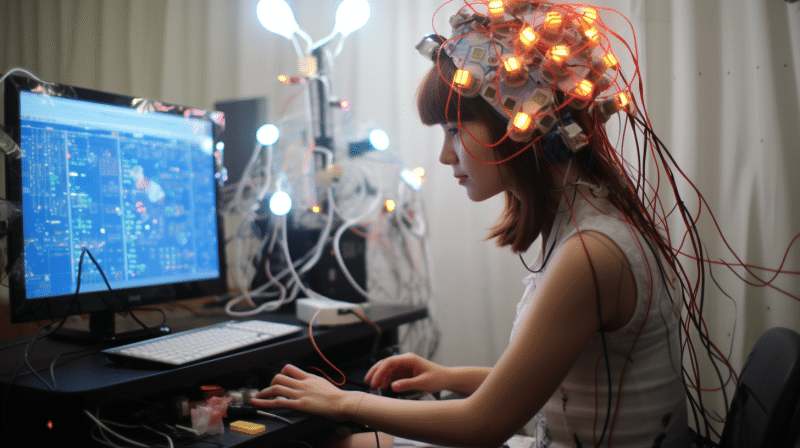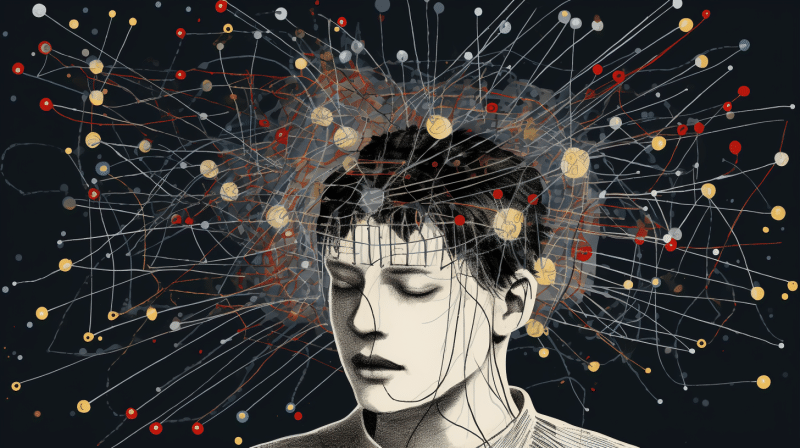Researchers have discovered that the wakefulness-promoting drug modafinil causes changes in brain activity patterns when people are at rest.
These findings provide new insights into how this medication works in the brain.
Key Facts:
- Modafinil is a medication used to treat excessive sleepiness from conditions like narcolepsy. It works by increasing dopamine and norepinephrine levels in the brain.
- Researchers examined the effects of modafinil on “microstates” – brief patterns of coordinated brain activity seen when the brain is at rest.
- Modafinil increased the occurrence and duration of a microstate linked to salience and attentional control regions but decreased sensory-related microstates.
- The findings suggest modafinil may shift the brain away from sensory processing and towards salience detection when at rest.
Source: Pharmacology (Berl)
Brief overview of modafinil
Modafinil is a wakefulness-promoting medication primarily used to treat disorders associated with excessive sleepiness like narcolepsy, shift work sleep disorder, and obstructive sleep apnea.
The drug was approved by the FDA in 1998 and is marketed under brand names like Provigil, Alertec, and Modvigil.
Modafinil works by increasing levels of catecholamine neurotransmitters, especially dopamine and norepinephrine, in the brain.
It does this by binding to transporter proteins that normally clear dopamine and norepinephrine from the synapses, inhibiting reuptake of these chemicals.
The excess dopamine and norepinephrine then continue to activate their respective receptors, producing wakefulness and attention-enhancing effects.
In addition to its clinical uses, modafinil has also gained popularity as an off-label “smart drug” or cognitive enhancer.
Some research indicates it may improve attention, learning, and memory in healthy individuals, though findings are mixed.
The mechanisms behind modafinil’s cognitive benefits are not fully understood.
How modafinil impacts the resting brain: an EEG analysis
To investigate how modafinil works in the brain, researchers conducted an EEG (electroencephalogram) study.

EEG measures electrical activity at the scalp to monitor brain function.
One analysis approach used with EEG is called microstate analysis.
Microstates are brief, distinct patterns of electrical activity across the scalp that reflect coordinated activity between large networks of neurons in the brain.
Different microstates have been linked to various brain networks and cognitive functions.
Studying how microstates are affected by medications like modafinil can provide insights into how those drugs impact brain functioning.
The researchers examined how modafinil affected microstates in healthy adults while they were at rest with eyes closed.
This resting state reveals the brain’s intrinsic activity patterns in the absence of external inputs and tasks.
Modafinil’s Effects on Resting Brain Patterns
Participants in the study underwent EEG recordings after taking placebo, 100mg modafinil, or 200mg modafinil.
Analysis revealed modafinil caused the following changes in microstates compared to placebo:
Increased Microstate C
- Occurrence: Microstate C occurred more frequently per second with both modafinil doses.
- Duration: Microstate C made up a greater proportion of the total recording time with both doses.
Microstate C has been linked to activity in attentional control regions like the anterior cingulate cortex and areas involved in detecting salient stimuli.
The increase in this microstate suggests modafinil may enhance activity in networks related to attention, cognitive control, and processing stimulus salience.
Decreased Microstates A and B
- Occurrence: Microstate B occurred less frequently per second with the 200mg dose.
- Duration: Microstate A and B made up a smaller proportion of recording time with the 200mg dose.
Past research suggests microstate A represents auditory areas and microstate B represents visual areas.
The reduction in these sensory-related microstates indicates modafinil may decrease resting activity in auditory and visual processing regions.
Altered Transitions Between Microstates
The study also examined patterns of transitions between microstates, revealing:
- Less transitions between microstates A and B with modafinil compared to placebo.
- More transitions from A and B to microstate C compared with placebo.
This suggests modafinil makes shifts between auditory/visual and salience/control networks less likely and transitions into salience/control networks more likely.
No Changes in Microstate D
Unlike microstates A-C, modafinil did not alter microstate D, which has been linked with activity in attentional networks.
This may be because microstate D is more active during attention-demanding tasks rather than an eyes-closed resting state.
Summary of modafinil’s impact on microstates
In summary, the primary effects of modafinil on resting brain activity were:
- Increased occurrence and duration of microstate C, linked to salience and cognitive control regions
- Decreased occurrence and duration of sensory microstates A and B
- Reduced transitions between A and B but increased shifts from A and B into C
What This Means for Modafinil’s Effects
These resting EEG findings provide new insights into how modafinil acts on the brain:
Enhancing Salience and Control Regions
The increase in microstate C suggests that at rest, modafinil enhances activity in regions involved in cognitive control, attention, and detecting salient stimuli.
This may prime the brain to be more alert to important cues in the environment and to exert more top-down attentional control.
Suppressing Sensory Areas
The reduction in sensory microstates A and B indicates modafinil decreases activity in auditory and visual areas.
Suppressing baseline sensory processing could improve signal-to-noise ratio for salient stimuli and reduce distracting sensory input.
Facilitating Shifts to Salience/Control Networks
The altered transition patterns suggest modafinil facilitates shifts from sensory networks into salience and control networks.
This could enable the brain to disengage from irrelevant sensory inputs and re-orient attention to salient environmental cues.
Overall, these changes would promote wakefulness and enhance attention – consistent with modafinil’s known effects.
No Changes for Some Attention Networks
The lack of effects on microstate D linked to attention networks indicates modafinil may not broadly enhance all attentional systems at rest.
Certain attention networks may only be engaged once a task requires their recruitment.
Caveats and Limitations of this study
Some important caveats about this research include:
- The study was in healthy volunteers without sleep disorders, while modafinil is used clinically to treat conditions like narcolepsy. The effects may differ in sleep-deprived populations.
- Microstates provide only a limited snapshot of resting networks. How modafinil alters actual functional connections between regions requires further investigation.
- The study was relatively small with only 30 participants. Larger sample sizes could reveal additional effects.
- Microstate analysis has some uncertainties about the exact neural sources underlying different microstate maps.
Takeaway: Modafinil primes resting brain for wakefulness
Despite limitations, these new findings shed light on how modafinil acts in the resting brain.
The results suggest that even in the absence of external tasks, modafinil shifts the brain towards a state primed for salience detection, cognitive control, and wakefulness.
Deactivating sensory regions and facilitating shifts into salience and control networks would promote alertness and attention.
This may be part of how modafinil delivers wake-promoting and attention-enhancing effects.
However, further research is needed to confirm the functional networks corresponding to different microstates and better understand modafinil’s mechanisms of action.
References
- Study: Effect of modafinil on electroencephalographic microstates in healthy adults
- Authors: Samantha R. Linton et al. (2022)







